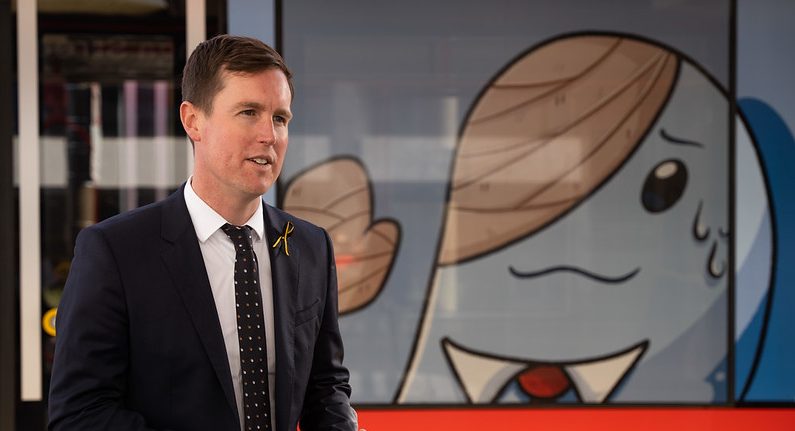
Spilt Milk revellers had a great day, but they didn’t all have a great journey home. Photo: File.
Debate over Canberra’s public transport capacity is continuing in the wake of the Spilt Milk festival, which attracted a crowd of about 45,000 to Exhibition Park on the weekend.
Thousands of festival attendees were forced to walk home after public transport systems quickly reached capacity.
But the ACT Government says Saturday’s Spilt Milk festival was successful and had provided them with learnings for future large-scale events, which it hopes to see more of.
Speaking in the Legislative Assembly, Transport Minister Chris Steel defended the Territory’s public transport system and its capacity to manage crowds.
It had been reported that light rail services were stopped completely but Mr Steel said this was a mischaracterisation and they were merely suspended for 20 minutes.
This was due to large numbers of people deciding to ignore safety barriers and walk on the light rail corridor instead, the Transport Minister said.

Minister for Transport and City Services Chris Steel said the event was successful but there were some learnings for next time. Photo: ACT Government.
“A large number of people decided they didn’t want to line up for the buses or light rail and instead decided they would walk to the city – given it is a relatively short distance from the city – in order to potentially go to the nightclubs down there and continue their recreational activities,” he said.
“The fact is, they did disrupt the light rail line and the buses.
“There’s always things the festival organisers can learn, particularly around crowd management. I appreciate some of the people in those crowds didn’t want to wait, but the lines weren’t that long. People who did wait got on a light rail and got on a bus and got to their destination.”
A spokesperson for the Government has also confirmed the presence of 50 additional Q City buses and additional Transport Canberra bus services were put on to help people travel from the city to areas such as Tuggeranong.
Opposition spokesperson for transport Mark Parton has obtained a video of revellers being directed to get off the light rail and walk instead.
He asked Mr Steel why people were asked to do this and what the point of light rail was if it wasn’t able to “cope” with major events.
But Mr Steel said the event had been a “successful one” and overall 25,000 people had been moved to and from the event on light rail.
He noted that all passengers were cleared from EPIC by 12:20 am, which he thought was “pretty good” considering the size of the crowd.
“There will be learnings for next time … as to what we can do to stop people from walking on the tracks which is obviously an unsafe practice,” Mr Steel said.
Region has spoken to a number of festivalgoers, one of whom somewhat disputes the Government’s recount.
She said she was told public transport services were at full capacity and she and her friends instead walked to Dickson, caught a bus from there to the city and then got a $213 Uber to her home in Belconnen.
It was ultimately a three-hour journey back.
Other festivalgoers told Region they anticipated light rail capacity problems and so made the decision to leave the event early.
Chair of the Public Transport Association of Canberra Ryan Hemsley said it was difficult to know what happened exactly on Saturday night as there were so many conflicting reports.
But he’s clear on one thing – Canberra’s public transport network must be able to cope with large crowds as the city grows.
Mr Hemsley is calling on the Government to review what occurred in order to make sure it doesn’t happen again.
“I’d question whether this was a driver training matter. For example, you could imagine a Melbourne tram driver might have been better able to handle crowds,” he said.
“It’s definitely raised questions about how we plan for future events and how our systems are designed because ultimately we want people to have good experiences on public transport.
“Cities have been dealing with large crowds since the Colosseum – this is not a new thing – it’s about mitigating that and putting measures in place, including putting enough people on the ground explaining what’s happening so people don’t get confused.”





















